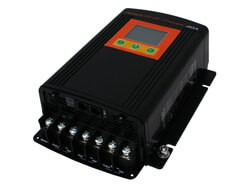It does not matter how big your system is,
Think current limiting device.
You need to work backwards and figure out your max Amps.
My transit van as 60amp CCP behind the driver seat, and I plan on putting the batts few feet away. Even though I have 60a (not sure what rpm I need though). I am putting in a 13A CC CV charger so my draw will NEVER to more than 200W with efficiency loss.
You can connect 2 13A 13.8v chargers to each of your banks and turn on your high idle switch and smoke your fav cigar while you wait for the batts to charge.
FYI: I love your Lance TCs







